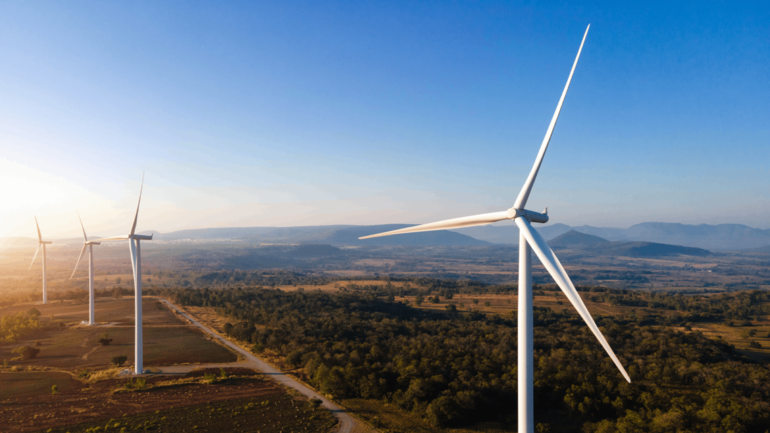Almost 60 percent of global greenhouse gas (GHG) emissions in the world come from the way we source our energy.
As governments, businesses and civil society gather in Madrid for the COP25 conference, decarbonizing our energy sector needs to be high on everyone’s agenda.
The impacts of climate change are already felt globally by people and businesses. To limit global warming to 1.5°C, we need to reduce our emissions. The UN Environment Programme’s Production Gap report launched two weeks ago shows that governments’ current plans to produce fossil fuels over the coming decades will push us over the 1.5°C tipping point. The speed at which we can stop using fossil fuels and decarbonize our energy – from how we heat our buildings to the ways we transport people and goods – will be key to avoiding the disastrous impacts of a warmer climate.
Around the world, forward-looking companies are rethinking their approach to purchasing and using energy. New technologies and business models show how a more efficient and low-carbon energy system is possible. But businesses need to act upon their new energy strategies fast if we are to deliver systems transformations at the speed we need.
To help companies make their transitions, WBCSD has developed guidelines on how to develop an integrated energy strategy. The guidelines help companies to work across their company’s core functions and value chains to achieve a broad range of environmental, financial and social-economic wins.
What is an integrated energy strategy?
In contrast to a traditional energy strategy, which is usually confined to a company’s own operations, an integrated energy strategy sets out how a company can achieve its energy-related financial and environmental objectives across its entire value chain. It considers all energy uses, from lighting and heating to cooling and transport.
The approach is ‘integrated’ in two ways. On the one hand, companies need to integrate all relevant functions within their company to develop their energy strategy, including corporate strategy; procurement or energy sourcing; sustainability; manufacturing or engineering; and finance. On the other hand, companies need to engage with their supply chain and customers to define how they utilize the knowledge, expertise and relationships that exist with its value chain to find more energy-efficient, circular and low-carbon ways of doing business.
What are the challenges?
While an essential activity for any forward-looking company, developing and implementing an integrated energy strategy is nevertheless a challenge. Building a company’s understanding of the need and value of an integrated energy strategy takes time but also requires confidence and commitment from its executive management. To be successful, companies must involve a broad range of internal and external stakeholders, follow fast-evolving energy markets and evaluate emerging technologies and sources of energy. An integrated energy strategy is most successful when it aligns closely with a company’s overall business strategy: where feedback loops between the two can help to manage possible discrepancies. It’s also important to consider how the energy strategy interacts with a company’s overarching sustainability strategy.
What are the benefits?
Companies are more efficient and competitive
A company that develops an integrated energy strategy knows its energy consumption in detail and can look to recover energy resources which would otherwise go to waste. This means that companies with integrated strategies evaluate what energy inputs they need; where those are available; and how their products, services and by-products can provide low-carbon energy solutions to other energy consumers. This increases a company’s energy efficiency, lowers its environmental impacts and can generate new revenue streams from energy.
To help employees tasked with the development of an integrated energy strategy, we have also developed a follow-on guideline on an integrated approach to energy and fuel efficiency. It explains how to work collaboratively across a company’s value chain - and cross-functionally within the company - to implement solutions to improve energy efficiency.
Overall, companies who take a strategic and integrated approach to energy sourcing and management and understand how they fit within the evolving energy system will gain competitive advantage in terms of managing costs and climate impact.
Companies can become net-zero emitters
Businesses cannot survive in societies that fail. Transitioning to a sustainable energy system is key to reducing global GHG emissions and building prosperous, climate-resilient societies.
To limit global warming to 1.5°C, GHG emissions need to be net-zero as early as possible within the second half of this century and will need to be reduced by 45 percent by 2030 compared to 2010 levels.
Companies urgently need to develop and implement integrated energy strategies to forge their pathway to reducing GHG emissions from energy consumption.
This time horizon is within the current business planning cycle of companies and requires companies to align their targets and actions now.
Companies contribute towards the SDGs
An integrated energy strategy also helps companies to align their operations with the Sustainable Development Goals (SDGs). Implementing an integrated energy strategy can contribute directly to SDG 7 (affordable and clean energy) and 13 (climate action), and indirectly to a broad range of other SDGs, including SDG 11 (sustainable cities and communities) and SDG 12 (responsible consumption and production).
Companies can equally identify and manage any potential negative impacts on the global sustainable development agenda that could arise as consequences of their operations with their integrated energy strategy. This allows companies to design and implement measures to prevent or mitigate negative impacts.
Watch this space
In early 2020, WBCSD’s Energy Solutions project will publish additional guidelines focusing on how companies can work with upstream and downstream stakeholders to source low-carbon energy. We will also publish a portfolio of business cases to help companies understand emerging energy solutions.








